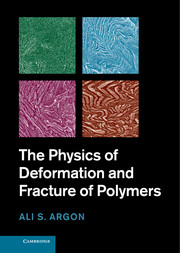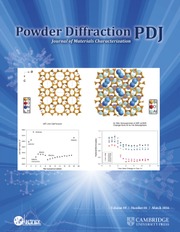Introduction to Elasticity Theory for Crystal Defects
$154.00 (C)
- Author: R. W. Balluffi, Massachusetts Institute of Technology
- Date Published: May 2012
- availability: Available
- format: Hardback
- isbn: 9781107012554
$
154.00
(C)
Hardback
Looking for an examination copy?
This title is not currently available for examination. However, if you are interested in the title for your course we can consider offering an examination copy. To register your interest please contact [email protected] providing details of the course you are teaching.
-
Self-sufficient and user-friendly, this book provides a complete introduction to the anisotropic elasticity theory necessary to model a wide range of crystal defects. Assuming little prior knowledge of the subject, the reader is first walked through the required basic mathematical techniques and methods. This is followed by treatments of point, line, planar and volume type defects such as vacancies, dislocations, grain boundaries, inhomogeneities and inclusions. Included are analyses of their elastic fields, interactions with imposed stresses and image stresses, and interactions with other defects, all employing the basic methods introduced earlier. This step by step approach, aided by numerous exercises with solutions provided, strengthens the reader's understanding of the principles involved, extending it well beyond the immediate scope of the book. As the first comprehensive review of anisotropic elasticity theory for crystal defects, this text is ideal for both graduate students and professional researchers.
Read more- Includes exercises with solutions
- Provides a self-sufficient introduction to the subject with no assumption of prior knowledge
- Represents the first comprehensive treatment of elasticity theory for crystal defects
Reviews & endorsements
“This is a very nice, self-contained and inclusive book. It should provide a foundation for the anisotropic elastic theory of defects and their interactions for years to come.” – John Hirth, Ohio State University
See more reviews“This is a wonderful book on the elastic foundations of point, line and surface defects in crystals. It is well written by a master experimental and theoretical craftsman who has spent a long professional life in this field. The mathematical coverage of crystal defects and their interactions unfolds in classic style.” – Johannes Weertman, Northwestern University
“Professor Balluffi has had a long and distinguished career in physics and materials science as a researcher and educator and made numerous landmark contributions to the theory of crystal defects and diffusion mechanisms. He taught discipline oriented graduate lecture courses on these subjects at both Cornell University and at MIT. In his present book he provides a detailed and comprehensive presentation of the Elasticity Theory of Crystal Defects in full anisotropic form. While mechanistic understanding of complex mechanical phenomena in crystalline solids can generally be had with isotropic elasticity, a full understanding of the ranges of applicability of mechanisms often necessitates the use of anisotropic elasticity employing advanced mathematical methodology. Such methodology is presently available only in scattered journal publications going back many years or in special treatises using advanced mathematical language of a large variety of forms and often involve frustrating statements of “it can be shown that”. In his book Balluffi provides detailed and compassionate developments, that skip little detail, permitting the reader to obtain a rare and penetrating view into complex methodology with a uniform mathematical language that is familiar to most advanced students and professionals. This is certain to make this book as a standard reference for years to come to physicists, materials scientists and practitioners in applied mechanics.” – Ali Argon, MIT
Customer reviews
Not yet reviewed
Be the first to review
Review was not posted due to profanity
×Product details
- Date Published: May 2012
- format: Hardback
- isbn: 9781107012554
- length: 458 pages
- dimensions: 253 x 178 x 25 mm
- weight: 1.06kg
- contains: 139 b/w illus. 3 tables 66 exercises
- availability: Available
Table of Contents
1. Introduction
2. Basic linear elasticity
3. Methods
4. Green's functions for unit point force
5. Interactions between defects and stress
6. Inclusions in infinite homogeneous regions
7. Interactions between inclusions and imposed stresses
8. Inclusions in finite homogeneous regions – image stresses
9. Inhomogeneities
10. Point defects in infinite homogeneous regions
11. Interactions between point defects and stresses
12. Dislocations in infinite homogeneous regions
13. Interactions between dislocations and stresses
14. Interfaces
15. Interactions between interfaces and stresses
16. Interactions between defects
Appendices
Index.
Sorry, this resource is locked
Please register or sign in to request access. If you are having problems accessing these resources please email [email protected]
Register Sign in» Proceed
You are now leaving the Cambridge University Press website. Your eBook purchase and download will be completed by our partner www.ebooks.com. Please see the permission section of the www.ebooks.com catalogue page for details of the print & copy limits on our eBooks.
Continue ×Are you sure you want to delete your account?
This cannot be undone.
Thank you for your feedback which will help us improve our service.
If you requested a response, we will make sure to get back to you shortly.
×








